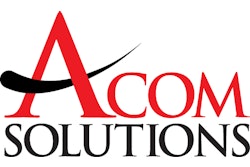Report from Visa International, Stanford University professor recommends integrated electronic payment systems for improvement of financial flows in supply chain systems
Rome — March 10, 2005 — Visa International is touting "Financial Flows & Supply Chain Efficiency," a new white paper outlining the benefits of linking financial flows and supply chains to increase overall business efficiency. The paper, sponsored by Visa International and authored by Professor Warren Hausman of Stanford University, was released at Visa's annual Multinational Council event, which is attended by Visa banks that offer Visa payment and information management solutions for multinational corporations.
The paper focuses on the current state of financial flows and supply chain efficiency, noting that the two systems have developed independently over time, with improvements in financial flows trailing behind those in supply chain management. Unrealized savings exist in the supply chain system because many current systems do not adequately address the financial flow, but instead focus on the flow of goods.
"The flow of goods is often the barometer of efficiency and success for supply chain management, while financial flows within the chain go unnoticed," said Aliza Knox, senior vice president, Visa Commercial Solutions, Visa International. "By streamlining financial flow processes through the use of electronic payment solutions such as purchasing accounts, distribution accounts and electronic invoice presentment and payment (EIPP), system challenges can be addressed and cost savings can be achieved, shifting company financial resources to more business-critical areas."
Because such solutions are poised to provide major improvements, making financial flows faster, more reliable, more predictable and less costly, Professor Hausman recommends that organizations evaluate their current processes to better understand how automated payment tools can enhance operational performance and increase profitability.
"Increasing the use of automated payment solutions reduces processing costs and accelerates payment, thereby eliminating the need for large amounts of funds to remain in working capital," said Professor Hausman. "Electronic payment systems can go a long way toward helping a company's cash flow, and, ultimately, the bottom-line."
These payment solutions also contribute to improved supply chain performance metrics, as financial flow key performance indicators have a direct correlation to product supply chain performance metrics. For instance, p-cards, distribution accounts and EIPP may result in reductions in both accounts receivable and accounts payable for companies in the supply chain.
Download a copy of the white paper "Financial Flows & Supply Chain Efficiency."
For more information on the current state of the payment solutions market, see the article "The Analyst Corner: Payment" in the December 2004/January 2005 issue of Supply & Demand Chain Executive.






